 00%
00%
getty
Since the Age of Discovery, humans have explored the world's sea routes, but there is still one of the "Seven Seas" that has yet to be conquered: The Arctic Ocean.
The Northern Sea Route is gaining prominence because of global warming, and it is the shortest route between East Asia and Europe. It has the potential to rewrite the world's logistics networks. The Arctic is also rich in natural resources, and the U.S., China and Russia have begun to compete for control of the region. It is also becoming important for Japan's energy policy.
An "Inland Sea" Trapped by Ice
The Arctic Ocean attracts a great deal of attention as it is not readily apparent on the familiar Mercator projection maps. The scale of the Arctic Circle is greatly distorted and does not represent reality. This presentation will discuss the importance of the Arctic Ocean while rotating a three-dimensional Earth.
Global Warming Opens New Shipping Routes
The Northern Sea Route connects the eastern and western parts of the Arctic Ocean. There have long been attempts to develop this route, but its use has been limited to research because of the harsh natural environment that is closed off by ice. But in recent years the sea ice has been shrinking because of global warming, and a new route has emerged as an alternative to existing ones. Russia, the coastal country along the route, is rapidly developing the area.
Global average temperature deviation
Shortest Route between East Asia and Europe
The Northern Sea Route will be the shortest shipping path between Europe and Asia. It is 30% to 40% shorter than routes that use the Suez Canal, which save fuel and reduces environmental impact. The route is also easier to navigate as it does not pass through the politically volatile Middle East, and there are no pirate attacks. However, it is expensive. The route comes with additional costs, like hiring the services of Russian icebreakers and building ships with special specifications. Coastal ports also need to be developed to ensure safe navigation.
North of 66 Degrees, 33 Minutes
The Arctic Circle is the region north of 66 degrees, 33 minutes north latitude. The temperature around the North Pole drops to -50 degrees Celsius and stays around 0 degrees even during summer. Because the Earth's axis is tilted at 23.4 degrees, the sun does not set over the North Pole during the six months, and the rest of six months are uninterrupted night.
Locations of the Arctic Circle and Japan
Frozen Seas: an Ocean Trapped in Ice
Most of the Arctic Circle is ocean, which is quite different from the massive continent of the Antarctic. Ice extends as far as the eye can see, and almost the entire Arctic Ocean is trapped in ice during winter. The average area of sea ice is larger than the U.S. or China, and three times the area of all Southeast Asian nations combined.
Arctic Ocean as An Inland Sea
Although the Arctic Ocean, centered on the North Pole, appears distant on a conventional flat map, it forms an "inland sea" bordered by the U.S. and Russia. The Danish territory of Greenland also stands out. Greenland made headlines when former U.S. President Donald Trump broached the idea of buying the territory from Denmark. As the sea ice recedes, new relationships among "neighboring countries" are emerging.
Shrinking Sea Ice and Growing Shipping Routes
The sea ice in the Arctic Ocean is melting. As global warming progresses, the Arctic Ocean will see greater use.
Ice in Flux: One-Fourth Normal Size in Summer
Sea ice is at its smallest in August and September
The Arctic sea ice fluctuates greatly with the seasons. It expands to about 15 million square kilometers in the winter, and then shrinks to about one-fourth that size in the summer months of August and September.
Half as Much Ice After 40 Years
Scale of sea ice continues to shrink
In recent years the amount of sea ice has been shrinking because of global warming. In 2020, there were 3.55 million square kilometers of ice when the ice was at its smallest, the second smallest year after 2012. The smallest extent of the ice continues to shrink by 1.6% each year, and in 2020 was only half the size it was in 1979. If it continues at this pace, there will be less than 3 million square kilometers around 2030.
Route Open for Record 88 Days
Period Northern sea route is open
In 2020, sea ice in the Arctic Ocean melted faster than usual. According to Weathernews, the Northern sea route became navigable without entering the sea ice zone on August 2, the earliest ever, and it remained open until October 28. That 88-day period is the longest on record. As global warming becomes more severe, the use of the Northern Sea Routes is expected to grow.
Following the Northern Sea Route from Yokohama
Mitsui O.S.K. Lines launched the "Vladimir Rusanov," an icebreaking liquefied natural gas carrier, in 2018. The first icebreaking LNG carrier owned and operated by a Japanese shipping company, it is 299 meters long and 50 meters wide and can carry 172,000 cubic meters of LNG. Using the ship's voyage as a reference, one can trace the 13-day voyage from Yokohama to the LNG terminal on the Yamal Peninsula.
Day1 Depart from Yokohama
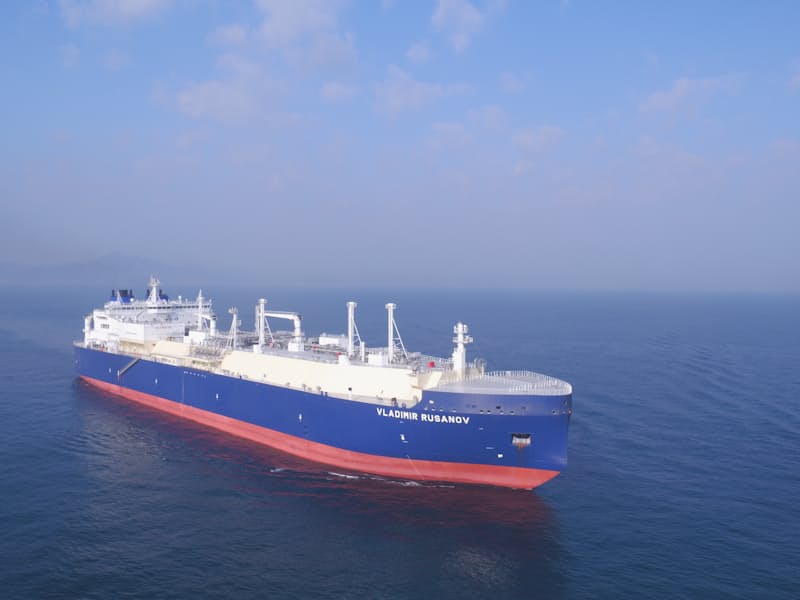
Midsummer in Yokohama. We boarded an icebreaker with a specially reinforced hull and a crew that had undergone special training to match international standards. The ship left Tokyo Bay and headed north. The islands of Japan could be seen to the left as we traveled.
Day4 Heading North Off Kamchatka
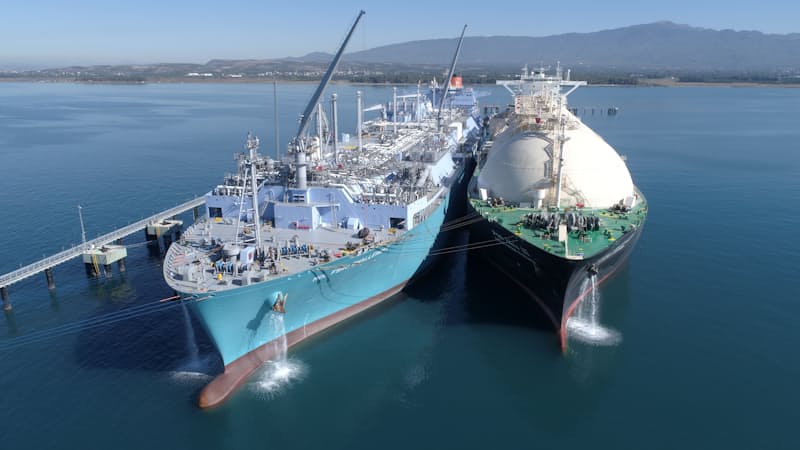
Mitsui O.S.K. Lines and Russia's Novatek are building a floating LNG storage unit (FSU) on the Kamchatka Peninsula. LNG mined in the Arctic Circle and brought in by icebreakers will be transshipped to conventional LNG transports there.
Day7 Into The Arctic Ocean
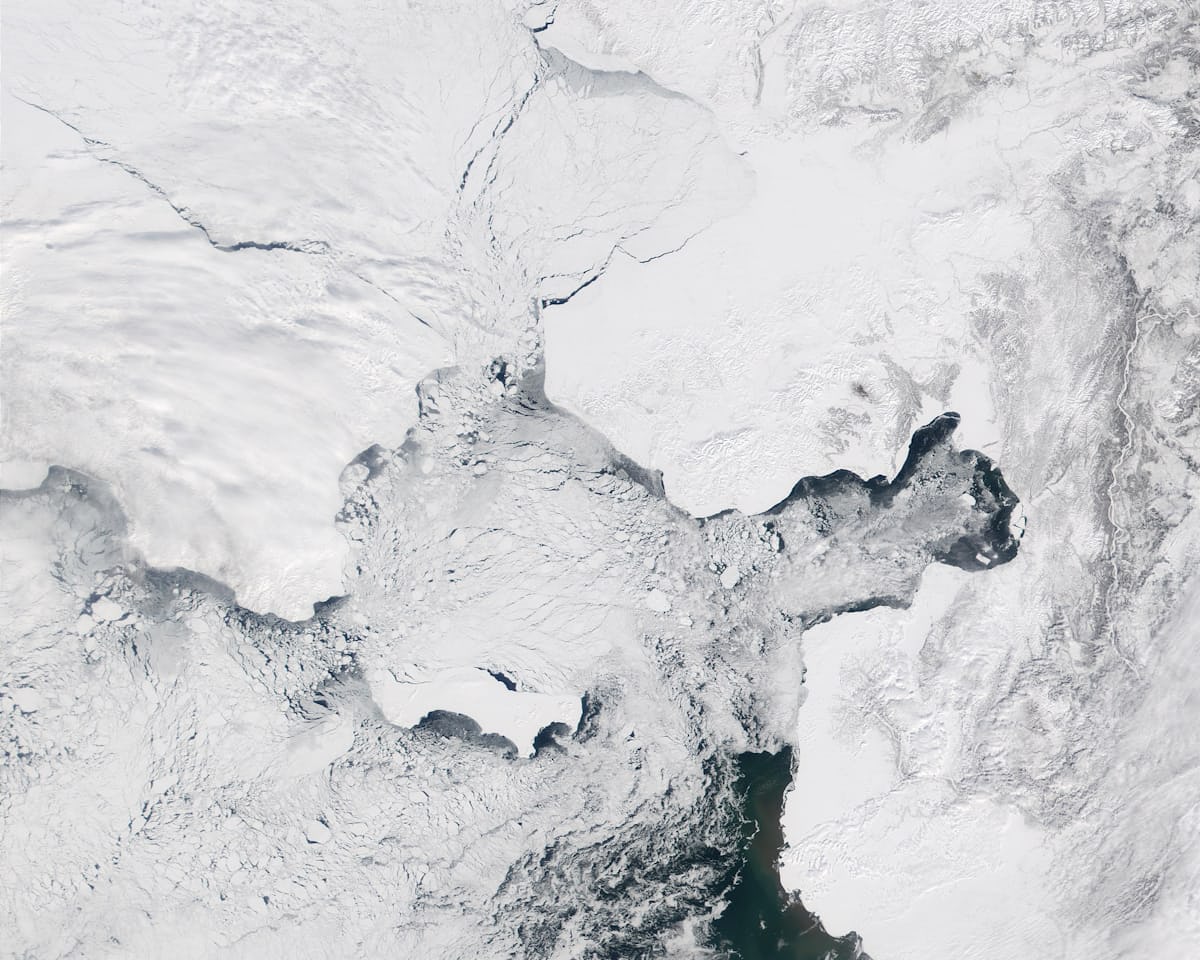
The Bering Strait, which separates the U.S. from Russia, is the gateway to the Arctic Ocean. The Pacific Ocean, nearly 20,000 kilometers east to west at its longest, ends here -- a strait less than 100 kilometers long. It is entirely covered with sea ice in winter. The ship now heads out into the Arctic Ocean.
Day9 Heading West into The Laptev Sea

The ship continues westward along the Russian coast. Temperatures are usually between 10 and 20 degrees Celsius, but with the wind chill it feels like it is less than 10 degrees. The sun hangs in the sky throughout most of the day.
Day13 Arriving at "The End of The Land"
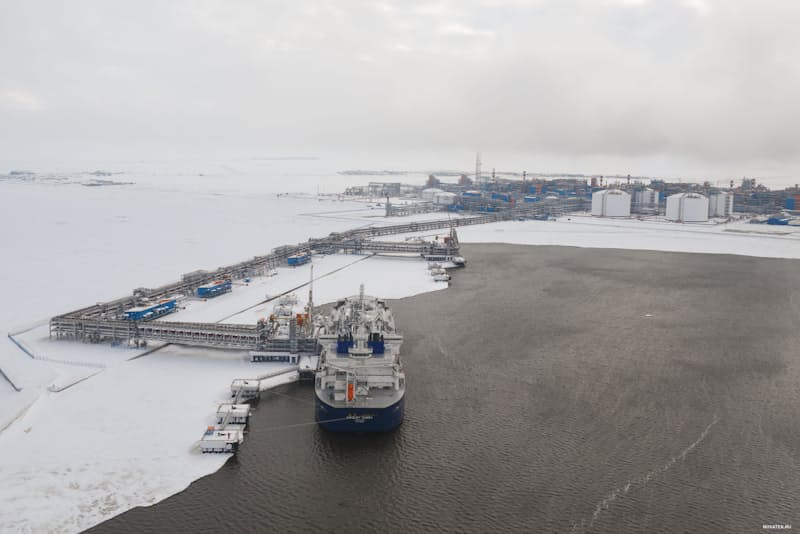
13 days after leaving Yokohama, the port of Sabetta on the Yamal Peninsula, the home of the LNG production facility, comes into view. The word "Yamal" means "the end of the land" in the language of the indigenous Nenets people. After the LNG is loaded, the ship departs for its next destination.
International Logistics Go north: The U.S., China and Russia Play Offense and Defense
The Northern Sea Route's importance is growing rapidly. The March stranding of a container ship in Egypt's Suez Canal highlighted the risks of an overly centralized transport network, and Russia, seeing the chaos as an opportunity, is appealing to the world. The U.S. is becoming increasingly wary of the growing influence of China and Russia, with China extending its reach and positioning itself as the "Ice Silk Road." The battle among the major powers over the international logistics network that is moving north is set to become even more intense.
Accident In Suez
The stranded container ship in the Suez Canal blocked the vital link between Europe and Asia for six days, temporarily holding up more than 400 ships. Until now, the only way to bypass the Suez Canal, which connects the Red Sea and the Mediterranean Sea, was to take a circuitous route around the Cape of Good Hope at the southern tip of Africa. But the will provide a new option. "Major Asian countries see the Northern Sea Route as a transportation corridor that can replace the Suez Canal," said Alexei Chekunkov, Russia's minister for the Development of the Russian Far East and Arctic.
Russia Leading in Arctic Development
Total cargo volume on Northern sea route
The volume of traffic in the Arctic Ocean has surged since around 2015, boosted by the construction and operation of Russia's LNG terminals. Total cargo volume in 2020 will reach about 33 million tons, about 15 times that of ten years ago. Russia has set a goal of raising transport volume to 80 million tons by 2024, 2.4 times the current level, and it is taking the initiative in establishing sea lanes. It has applied to the United Nations to have the seabed outside its Exclusive Economic Zone (EEZ) recognized as its continental shelf, and it is tightening regulations by requiring ships to declare in advnace that they will navigate the route.
China Asserting Interests
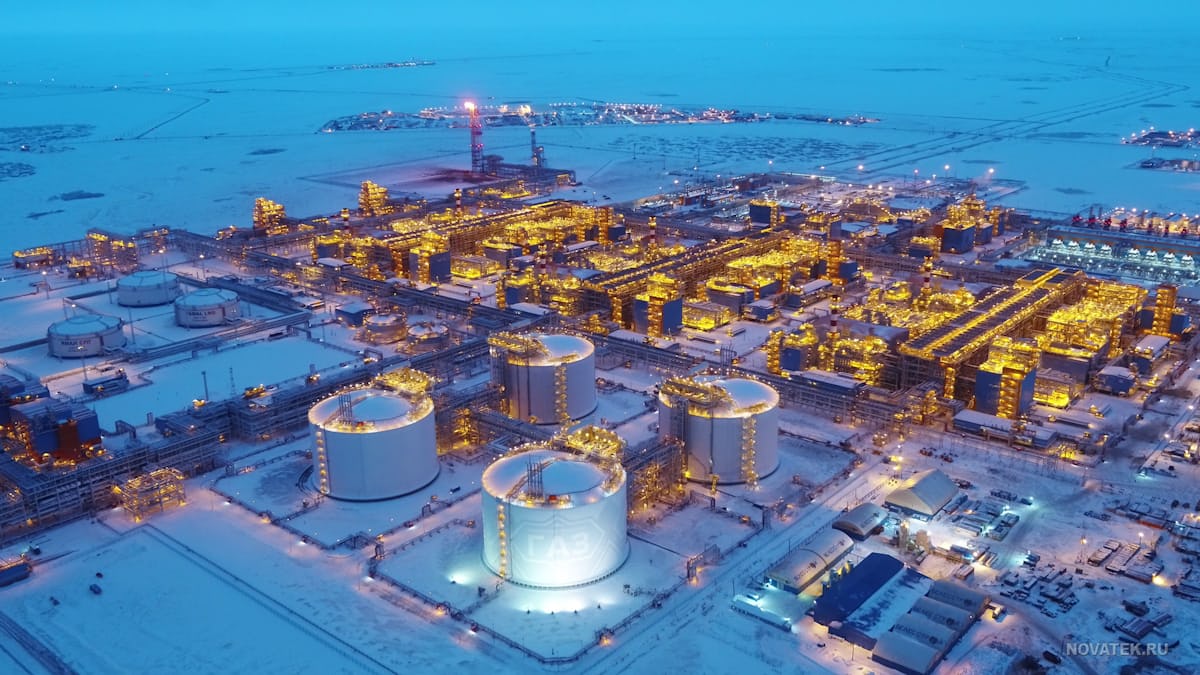
China, which does not abut the Arctic but claims to be a "near-Arctic country," is also acquiring interests in the region. Chinese company and fund took about 30% stakes in Russia's first Arctic LNG terminal, Yamal LNG, and supported its development while Russia was under Western sanctions. In the five-year plan adopted by the National People's Congress in March 2021, China said clearly it would be involved in Arctic development. It plans to launch a test satellite for Arctic observation and build a nuclear-powered icebreaker, and it is also exploring investment in Greenland, which has one of the world's largest deposits of rare earths.
Challenges in Commercialization
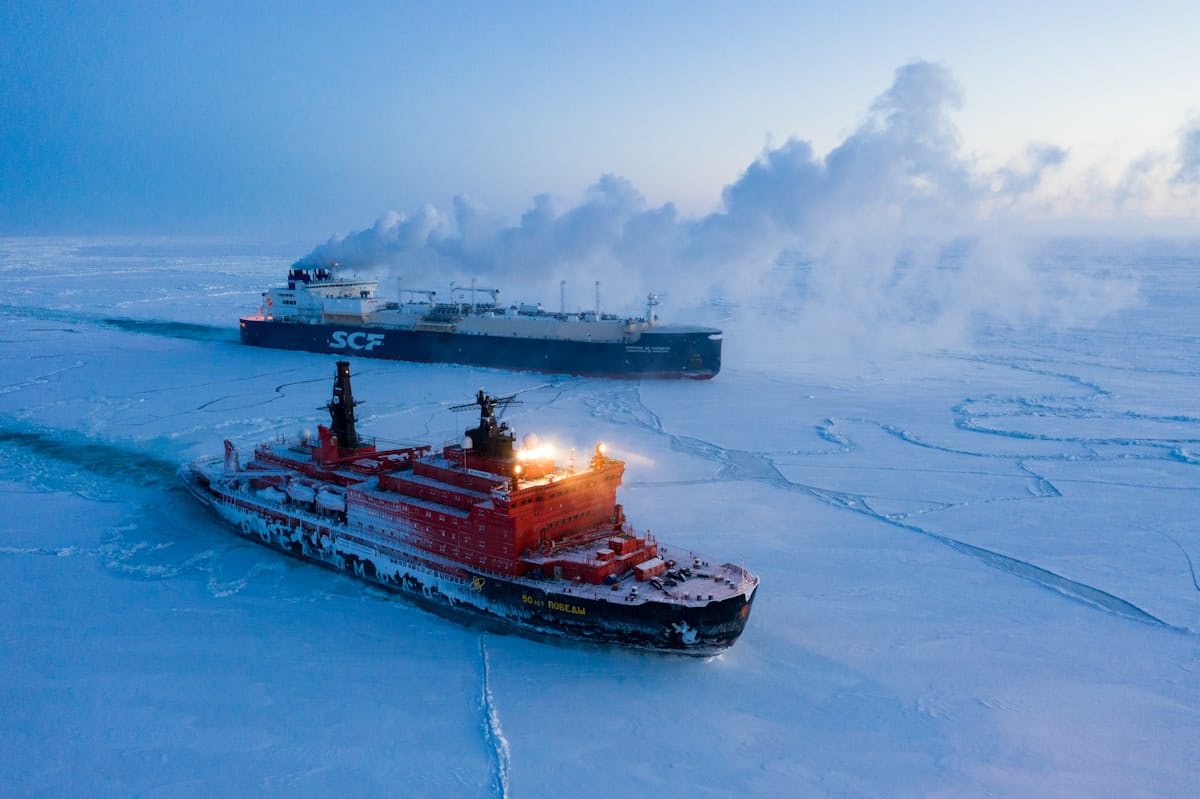
The commercialization of the Northern sea route still faces many challenges. Currently the route is mainly used for LNG shipments, and demand for cargo along the route, which is sparsely populated, is unlikely. The cost of building and chartering dedicated ships is also relatively high. The unpredictability of the sea ice conditions also makes regular operation throughout the year difficult. "The economics of the route will depend on weather conditions and the price of LNG in Asian markets," said Daisuke Harada of Japan Oil, Gas and Metals National Corporation. Russia plans to operate an LNG transshipment terminal it is building on the Kamchatka Peninsula in the Far East in 2023, and it is rushing to improve transport efficiency.
Using Rail Networks
With the COVID-19 pandemic, cargo transport by ship and air has stalled. The Trans-Siberian Railway (roughly 9,300 km from Moscow to Vladivostok in the Far East), often used under the former Soviet Union, is once again attracting attention as a logistics network connecting Europe and Asia. In January, Tokyo-based Toyo Trans began it to provide consolidated transportation to Europe. The China Railway Express, which connects China and Europe via Kazakhstan and Russia, has also seen its number of transport trains increase, reaching a record high in 2020. Since the transportation period is shorter than that of ships and the freight rate is cheaper than that of air cargo, rail is seen as a new option driven by the global push to decarbonize.
Direct Link to Japan's Energy Security
Volume of Japan's LNG imports
Japan cannot remain disinterested in resource development in the Arctic. Japan relies on the Middle East for about 90% of its crude oil imports. The use of natural gas is also important from an energy security perspective, said Kazuya Hamazaki, executive officer at Mitsui O.S.K. Lines. "Importing LNG from the Arctic is also significant from the standpoint of the national interest." The company will invest a total of 100 billion yen in the construction of three new icebreaking LNG carriers. Construction is scheduled to be completed in 2023 or after, and the company will invest management resources in the transportation of LNG produced in the Arctic.
